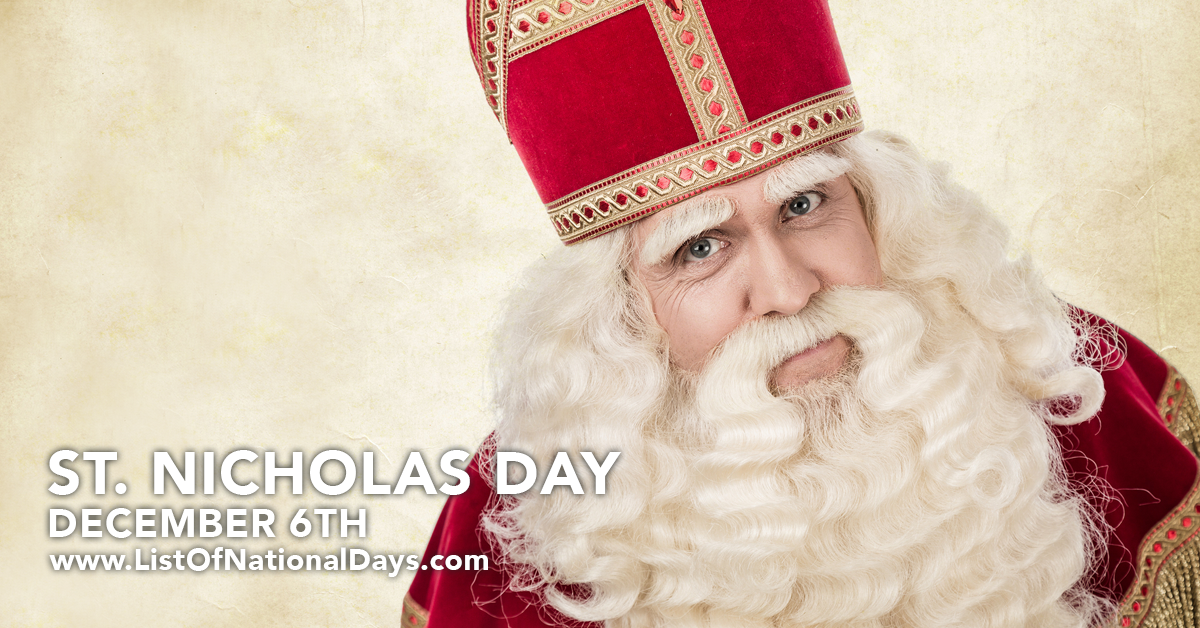St. Nicholas Day is a Christian holiday celebrated on December 6th, honoring the life of St. Nicholas, the patron saint of children, sailors, and merchants.
#HASHTAGS
#StNicholasDay
St. Nicholas Day is celebrated annually on December 6th
| Year | Date | Day |
|---|---|---|
| 2023 | December 6 | Wednesday |
| 2024 | December 6 | Friday |
| 2025 | December 6 | Saturday |
| 2026 | December 6 | Sunday |
| 2027 | December 6 | Monday |
| 2028 | December 6 | Wednesday |
| 2029 | December 6 | Thursday |
| 2030 | December 6 | Friday |
| 2031 | December 6 | Saturday |
| 2032 | December 6 | Monday |
| 2033 | December 6 | Tuesday |
| 2034 | December 6 | Wednesday |
| 2035 | December 6 | Thursday |
